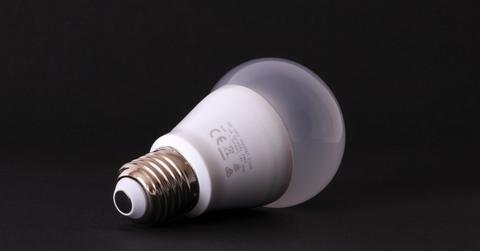LED Bulbs Reduced 570 Million Tons Of Carbon Emissions In 2017
Thanks to LED light bulbs becoming cheaper and more attractive with the variety of colors they offer, it's reduced carbon emissions by over half a billion tons in the lighting industry. They don't use near the power of traditional bulbs and less have to be produced.
Updated May 28 2019, 11:21 a.m. ET
LED light bulbs have seen plenty of growth in recent years with the many advantages it has over traditional lighting. Costs have come down drastically and the technology has provided more options for consumers. That’s also paid off in terms of eliminating our carbon footprint, with emissions coming down by over half a billion tons in 2017.
IHS Markit, a London-based company that analyzes information and provides solutions for corporations, released a study that shows 570 million tons of carbon dioxide emissions were reduced thanks to the use of LED bulbs. This is an amount similar to shutting down 162 coal-fired power plants around the world. Considering LED bulbs generate just as much light, how does this all work?
Less power is needed to keep these bulbs lit up. Specifically, they use 40 percent less power than fluorescent light bulbs and double that amount for incandescent lights. Instead of looking toward wattage, a better measurement for LEDs is lumens. To achieve a bright level of 2,600 lumens, incandescent bulbs would need 150 watts while LEDs only require between 25 to 28 watts.
This also makes LED lights more efficient and gives them the ability to last far longer than traditional bulbs. Since they can last up to 20 years in some cases, this would decrease production of bulbs, eliminating emissions from the process and creating less waste. LEDs also don’t contain mercury like fluorescents do.
“The efficiency of LEDs is essentially what makes them environmentally friendly,” Jamie Fox, IHS Markit’s principal analyst for the lighting and LEDs group, said in a press release. “Therefore, LED conversion is unlike other measures, which require people to reduce consumption or make lifestyle changes.”
10 percent of this reduction by LED lighting came from the supplier, Nichia. Other companies, notably Samsung and LG Innotek, fell into the range between four to eight percent. This study only details what’s happened in the lighting industry and not LEDs that are in televisions and other devices, which also prolongs them and uses less emissions.
LED light bulbs can be a good replacement for the majority of business and residential buildings. For home use, they can offer customizable lighting at a much cheaper price than just a few years ago. However, these bulbs are still not as cheap as the traditional version and need to be used properly to max out the benefits.
If heat remains trapped around the bulb, it’ll become hot and burn out in a short amount of time anyway. Since LEDs don’t need much power, only specific ones are compatible with dimming systems. Knowing these precautions, people can take advantage of the savings down the road by replacing standard lights with an LED upgrade.
